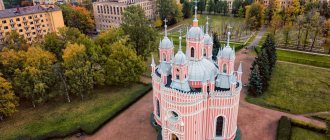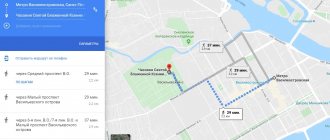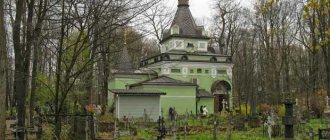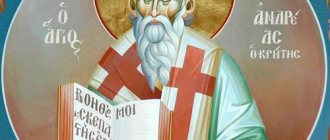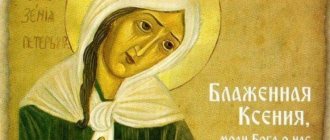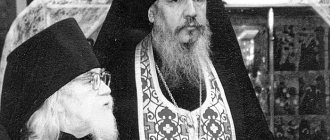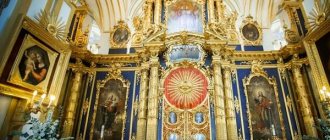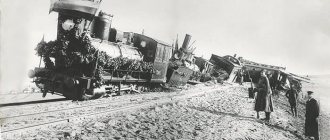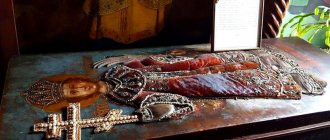Mir
Russia St. Petersburg Church of the Holy Martyr. Andrei Kritsky on Rizhsky Ave. (St. Petersburg) Map is loading...
{"format":"leaflet","minzoom":false,"maxzoom":false,"limit":50,"offset":0,"link":"all","sort":[""], "order":[],"headers":"show","mainlabel":"","intro":"","outro":"","searchlabel":"\u2026 \u0441\u043b\u0435\ u0434\u0443\u044e\u0449\u0438\u0435 \u0440\u0435\u0437\u0443\u043b\u044c\u0442\u0430\u0442\u044b","default":"","import-annotation":false,"width ":"auto","height":"350px","centre":{"text":"","title":"""link":"""lat":59.913896870000002081724232994019985198974609375,"lon": 30.289779630000001731104930513538420200347900390625,"icon":""},"title":"","label":"","icon":"","lines":[],"polygons":[],"circles":[ ],"rectangles":[],"copycoords":false,"static":false,"zoom":8,"defzoom":14,"layers":["OpenStreetMap"],"image layers":[] ,"overlays":[],"resizable":false,"fullscreen":true,"scrollwheelzoom":true,"cluster":false,"clustermaxzoom":9,"clusterzoomonclick":true,"clustermaxradius":80, "clusterspiderfy":true,"geojson":"","clicktarget":"","showtitle":true,"hidenamespace":false,"template":"","userparam":"","activeicon": "","pagelabel":false,"ajaxcoordproperty":"","ajaxquery":"","locations":[{"text":"\u003Cb\u003E\u003Ca href=\"/palomnik/%D0% A6%D0%B5%D1%80%D0%BA%D0%BE%D0%B2%D1%8C_%D0%BF%D1%80%D0%BC%D1%87._%D0%90%D0% BD%D0%B4%D1%80%D0%B5%D1%8F_%D0%9A%D1%80%D0%B8%D1%82%D1%81%D0%BA%D0%BE%D0%B3% D0%BE_%D0%BD%D0%B0_%D0%A0%D0%B8%D0%B6%D1%81%D0%BA%D0%BE%D0%BC_%D0%BF%D1%80._( %D0%A1%D0%B0%D0%BD%D0%BA%D1%82-%D0%9F%D0%B5%D1%82%D0%B5%D1%80%D0%B1%D1%83% D1%80%D0%B3)\» title=\»\u0426\u0435\u0440\u043a\u043e\u0432\u044c \u043f\u0440\u043c\u0447. \u0410\u043d\u0434\u0440\u0435\u044f \u041a\u0440\u0438\u0442\u0441\u043a\u043e\u0433\u043e \u043d\u0430 \u0420\u0438\u0436 \u0441\u043a\u043e\u043c \u043f \u0440. (\u0421\u0430\u043d\u043a\u0442-\u041f\u0435\u0442\u0435\u0440\u0431\u0443\u0440\u0433)\»\u003E\u0426\u0435\u0440\u043a\u043 e\u0432\u044c\ u043f\u0440\u043c\u0447. \u0410\u043d\u0434\u0440\u0435\u044f \u041a\u0440\u0438\u0442\u0441\u043a\u043e\u0433\u043e \u043d\u0430 \u0420\u0438\u0436 \u0441\u043a\u043e\u043c \u043f \u0440. (\u0421\u0430\u043d\u043a\u0442-\u041f\u0435\u0442\u0435\u0440\u0431\u0443\u0440\u0433)\u003C/a\u003E\u003C/b\u003E\u003Chr /\ u003E\u003Ca href=\"/palomnik/%D0%A1%D0%B2%D0%BE%D0%B9%D1%81%D1%82%D0%B2%D0%BE:%D0%90%D0%BD%D0 %BD%D0%BE%D1%82%D0%B0%D1%86%D0%B8%D1%8F\" title=\"\u0421\u0432\u043e\u0439\u0441\u0442\u0432\u043e:\ u0410\u043d\u043d\u043e\u0442\u0430\u0446\u0438\u044f\»\u003E\u0410\u043d\u043d\u043e\u0442\u0430\u0446\u0438\u044f\u003C/a\ u003E: "\u0426 \u0435\u0440\u043a\u043e\u0432\u044c \u043f\u0440\u0435\u043f\u043e\u0434\u043e\u0431\u043d\u043e\u043c\u0443\u0447\u0435\u 043d\u0438\u043a\u0430\u0410 \u043d\u0434\u0440\u0435\u044f \u041a\u0440\u0438\u0442\u0441\u043a\u043e\u0433\u043e"' \u043f\u043e\u0441\u0442\u0440\u043 e\u0435\u043d\u0430\u0432 1891-1892 0440\u044c\u0435\u043c\u041a > 043e\u043c\u043e\u043d\ u0430\u0441\u0442\u044b\u0440\u044f","title":"\u0426\u0435\u0440\u043a\u043e\u0432\u044c \u043f\u0440\u043c\u0447. \u0410\u043d\u0434\u0440\u0435\u044f \u041a\u0440\u0438\u0442\u0441\u043a\u043e\u0433\u043e \u043d\u0430 \u0420\u0438\u0436 \u0441\u043a\u043e\u043c \u043f \u0440. (\u0421\u0430\u043d\u043a\u0442-\u041f\u0435\u0442\u0435\u0440\u0431\u0443\u0440\u0433)","link":"""lat":59.91389687000000208172423 2994019985198974609375,"lon": 30.289779630000001731104930513538420200347900390625,"icon":""}],"imageLayers":[]}
59.913866; 30.289718
Russia, St. Petersburg, Rizhsky Prospekt, 9
Saint Petersburg
Russia
Telephone.:
8 (812) 251-01-65, 251-99-28
Email:
,
Church of the Holy Martyr Andrew of Crete
built in 1891-1892, it is the courtyard of the Constantine-Eleninsky Monastery. Patronal holiday: October 30, the day of remembrance of the great saint. Andrey Kritsky.
History[edit]
The Church of the Venerable Martyr Andrei Kritsky on Rizhsky Prospekt, building 9, is part of the complex of historical buildings of the Expedition for the Procurement of State Papers (now NPO GosZnak) and has an interesting history. It is located near the Azimut Hotel, formerly the Sovetskaya Hotel, one kilometer from the Baltiyskaya metro station. Anyone can reach it based on these topographic points.
And yet, one often hears that the location of the temple is difficult to guess and easy to pass by. In the line of buildings on Riga Prospekt, you really notice the Church of St. Andrew of Crete only when you look up to the sky and see the golden bell towering above the roofs.
The temple was erected in memory of the miraculous rescue of the Imperial family and Tsar Alexander III during the crash of the imperial train on October 17 (29), 1888 on a section of the railway near the station. Borki near Kharkov: workers and employees of the factory - Expeditions for the procurement of state and securities - decided to build a church with their own donations.
In July 1891, the priest Philosopher of Ornatsky (canonized as a saint) was invited to work on the commission for the construction of the church in the name of the Venerable Martyr Andrei of Crete during the Expedition for the Procurement of State Papers. On August 26, 1892, at the request of the Expedition employees, he was appointed rector of this temple.
In Soviet times, the church building was used for various economic needs, and, as often happened in those years, at one time there was even a club in the church (named after Nogin).
Description
It is worth saying that both the external and internal decorations of the temple are particularly rich and unique. If you look at the church from the outside, then its architecture itself will catch your eye. It is not typical for an Orthodox church, in our understanding. The temple fits into the very style of the building, although it has a gilded dome in the form of an onion above the entrance to the belfry.
Interior of the Church of St. Andrew of Crete
The beauty of the interior has always amazed both parishioners and tourists. This way you can easily notice the monumental columns made of granite. The walls are painted with wax paints. The iconostasis was carved from oak by Dmitry Trunov.
Shrines[edit]
- particle of the relics of St. Spyridon of Trimifuntsky
- particle of the relics of St. Nicholas the Wonderworker
- particles of the relics of the prophet. Zechariah and rights. Elizabeth
- particle of the relics of St. Arkady of Constantinople
- particle of the relics of the Military Medical Center. Tatiana
- particle of the relics of the Great Martyr. St. George the Victorious
- particles of relics equal to app. Cyril and Methodius
- particles of relics equal to app. Konstantin and Elena
- particle of the relics of MC. Justinia and many, many other revered Orthodox saints
- icon of the Holy Spirit Andrey Kritsky
- icon of the Mother of God of Vatopedi
- Icon of the Mother of God Three-Handed
- icon of St. Nicholas the Wonderworker
Church of St. Andrew of Crete Compound of the Constantine-Eleninsky Monastery St. Petersburg
The house church of the State Papers Procurement Expedition was built in honor of the miraculous deliverance of Emperor Alexander III and his family during the crash of the royal train in Borki on October 17 (29), 1888. The workers and employees of the factory decided to build a church with their own donations. 32 thousand rubles were collected and this money was not enough. There was also not enough free space for a temple in the factory yard, so Karl Yakovlevich Mayevsky (1824-1897), a Russian engineer-architect, academician of architecture and Privy Councilor, designed the temple on the third floor of an administrative building facing the avenue.
On the feast of the Dormition of the Blessed Virgin Mary, August 15, 1891, a church for 1,500 people was founded. The temple was supposed to be consecrated in the name of the Venerable Martyr Andrew of Crete († 767), the author of the Great Penitential Canon, which is still read during Lent. It was on the day of memory of this saint that the salvation of the Imperial family took place.
The construction commission included the future new martyr Fr. Philosopher Nikolaevich Ornatsky. Until 1913 he was the rector of the new church.
The construction of the building was carried out in 1891-1892 and cost 60 thousand rubles.
On October 18, 1892, the solemn consecration of the house church in the name of St. took place. Andrew of Crete by Bishop Anthony of Vyborg (Vadkovsky; later Metropolitan of St. Petersburg and Ladoga) with the participation of Father John of Kronstadt.
Also present were the Chief Prosecutor of the Holy Synod, K.P. Pobedonostsev, Minister of Public Education, Secretary of State Count I.D. Delyanov and other high officials.
The temple became one of many temples built during 1888-1896 in honor of the miraculous salvation of the August family (in total, 126 temples, 32 chapels and 320 chapels were built).
Church of St. Andrei Kritsky during the Expedition for the procurement of state papers was located on the third floor of an administrative building standing along the avenue, crowned with a dome and a belfry above the entrance.
The elongated interior of the church was divided into three naves by polished granite columns. The arches were richly painted with wax paints using the encaustic technique, the walls were decorated with images, frescoes and mosaics. The images for the carved oak iconostasis were created by the artist D.V. Trunov. The icons in the royal doors were painted by A.I. Charlemagne. Other icons, including “The Savior Not Made by Hands,” were performed by V.A. Bobrov, the altarpiece stained glass “Prayer for the Cup” was performed by Frank’s company. Outside, above the entrance, they placed a copy of the painting by Acad. I.K. Makarov, depicting the crash in Borki.
In 1896-1897, the Trinity Chapel was built near the factory hospital. At the beginning of 1918, its rector, Fr. Peter (Ivanovsky) - consecrated it as St. Nicholas Church.
In Soviet times, the church changed from a factory to a parish church (1917). In May 1923, the church was completely closed, the cross was removed, the dome was dismantled, and the icons were confiscated “for the benefit of the starving people of the Volga region.” The premises were adapted into a hostel for elderly workers, and then into a club named after. Nogina. The chapel was adapted into a factory first aid station.
In the nineties of the 20th century, the church premises were transferred to the Goznak organization and from this the revival of the temple began. In 1998, on the day of remembrance of the Venerable Martyr Andrei of Crete, a prayer service was held in the church premises. Renovations began that same year and were completed by the fall of 2006. The temple on the third floor of the house was completely painted inside. A new iconostasis was also created. The Moorish colonnade remained authentic, although it had numerous chips on the granite. Now it has been restored. The staircase remains original.
On June 13, 2007, the complete consecration of the temple after renovation took place. The consecration and first Divine Liturgy in the renovated church was led by Metropolitan Vladimir of St. Petersburg and Ladoga, co-served by Archpriests Ippolit Kovalsky, Alexander Kudryashov, Gennady Bartov, Archimandrite Sergius (Sturov) and other clergy of the diocese. The consecration of the temple coincided with the day of remembrance of the holy martyr Archpriest Philosopher Ornatsky, who served as the first rector of the temple from 1892 to 1913 and who, after the October Revolution, became one of the first Petrograd new martyrs to suffer for Christ.
The three-story facade of the temple is decorated with mosaic inserts and the image of St. Andrew of Crete and is crowned with a golden dome with an eight-pointed cross. On the wall of the landing between the second and third floors there is a painting “Behold the Man.” The temple premises are divided by two rows of arcades lavishly decorated with gold inserts.
The temple was restored through the efforts of the director of the Russian National Museum, Alexander Nikolaevich Ivanov, and the general director of the Federal State Unitary Enterprise Goznak, Arkady Vladimirovich Trachuk.
On September 26, 2006, His Holiness Patriarch of Moscow and All Rus' Alexy II visited here.
The church acted as a subsidiary of the church in honor of Sts. Equal-to-the-Apostles Constantine and Helena in the village of Leninskoye, and after the establishment of the Constantine-Eleninsky convent in 2006, it became its metochion. It is an architectural monument (of regional significance).
In the church you can pray before the holy relics of St. Spyridon of Trimythous, St. Nicholas the Wonderworker, Saints Zechariah and Elizabeth, Saint Arcadius of Constantinople, St. Great Martyr Tatiana, St. Great Martyr George the Victorious. In the temple there are particles of the relics of St. Equal-to-the-Apostles Cyril and Methodius, Saints Equal-to-the-Apostles Constantine and Helen, Saint Justinia and many, many other revered Orthodox saints.
Address: St. Petersburg, Rizhsky Prospekt, building 9. Telephone (accounting). Directions: metro station “Baltiyskaya”, then 1 km on foot.
Museum of Christian Culture
The museum is located in the building of the Church of St. Andrew of Crete, at the address: Rizhsky Prospekt, 9. The museum is a branch of the Russian National Museum.
The Museum of Christian Culture occupies a spacious room on the ground floor of the building. Its collection includes a collection of Russian and Byzantine icon painting, including about two hundred monuments from the 11th - early 20th centuries. The central place in the exhibition is occupied by Byzantine icons of the 11th - 16th centuries, among which are a network of unique works from the period of “Palaeologian classicism”.
The main part of the exhibition consists of works by Russian icon painters of the 15th - early 20th centuries. The museum's collection contains monumental paintings by the French engraver and artist Gustav Doré, which today are the only ones in the collections of the Russian Federation.
The museum is open to everyone. Free admission.
| Church of St. Andrew of Crete on Riga Avenue. To the left of it in the photo is the building of the State Polar Academy (Rizhsky Ave., 11), to the right of the photo is one of the buildings of the Goznak factory. Photo: 2017. |
| View of the Church of St. Andrew of Crete from Tsiolkovsky Street. Behind the historical buildings rises the box of the former Sovetskaya Hotel, now the Azimut Hotel. Photo: 2022. |
| Church of St. Andrew of Crete, view from Rizhsky Prospekt. Photo: 2017. |
| The dome of the temple is towering over the surrounding buildings. Photo: 2017. |
| The dome of the temple with a gilded dome and an eight-pointed cross. Photo: 2017. |
| Dome of the Church of St. Andrew of Crete. Photo: 2022. |
| The dome of the temple is on an octagonal drum and the ringing tier below it. Photo: 2022. |
| Belfry on the bell tower of the Church of St. Andrew of Crete. Photo: 2017. |
| Tier of ringing with bells. Photo: 2022. |
| Third floor. Windows of the Church of St. Andrew of Crete and mosaic inserts under them. Photo: 2022. |
| Entrance to the temple from Rizhsky Avenue. Photo: 2022. |
| Above the entrance is a mosaic icon of St. Andrei Kritsky and mosaic inserts decorating the facade. Photo: 2022. |
| Mosaic icon of St. Andrei Kritsky above the entrance. Photo: 2017. |
| Mosaic inserts decorating the facade of the temple from Riga Avenue. Photo: 2022. |
| Mosaic inserts decorating the facade of the temple from Riga Avenue. Photo: 2022. |
| Doors to the Church of St. Andrew of Crete. Photo: 2022. |
| Wooden carvings decorating the door. Photo: 2022. |
| Door handles. Photo: 2022. |
| Columns on the sides of the entrance door of the temple. Photo: 2022. |
| Columns on the sides of the entrance door of the Church of St. Andrew of Crete. Photo: 2017. |
| Lantern near the entrance to the temple. Photo: 2022. |
| Column capital. Photo: 2022. |
| A plaque on the wall of the church: Moscow Patriarchate St. Petersburg Diocese Compound of the Constantine-Eleninsky Convent Church of the Holy Martyr Andrew of Crete. Photo: 2022. |
| Stairs leading to the Church of St. Andrew of Crete. Photo: 2022. |
| Stair railing. Photo: 2022. |
| Painting between the first and second floor. Photo: 2022. |
| Stairs leading to the Church of St. Andrew of Crete. Photo: 2022. |
| Stairs leading to the temple. Photo: 2022. |
| The painting between the second and third floors is “Behold the Man.” Photo: 2017. |
| The interior of the Church of St. Andrew of Crete. Photo: 2017. |
| The interior of the Church of St. Andrew of Crete, the southern part of the nave. Photo: 2022. |
| Church of St. Andrew of Crete on Riga Avenue. Next to it is the entrance to a small courtyard. Photo: 2022. |
| Gate leading to the courtyard. Photo: 2022. |
| The grille of the gate does not contain Orthodox symbols. Photo: 2017. |
| Courtyard. Photo: 2022. |
| Corner of the temple building. Photo: 2022. |
| Corner of the building of the Church of St. Andrew of Crete. Photo: 2022. |
| A sign on the wall “Museum of Christian Culture.” Photo: 2017. |
| The drainpipes are fenced with grating. Photo: 2022. |
| Fragment of a drainpipe grate. Photo: 2022. |
| Lattice on the museum window. Photo: 2022. |
| Monogram of Emperor Alexander III. Photo: 2022. |
| Museum of Orthodox Culture on the first floor of the Church of St. Andrew of Crete. Photo: 2022. |
| The bell tower of the temple, reflected in the windows of the house opposite. Photo: 2017. |
| Church of St. Andrew of Crete on Riga Avenue. Photo: 2022. |
| Church of St. Andrew of Crete, view from Lermontovsky Prospekt. Photo: 2022. |
| Rizhsky Avenue from Lermontovsky and a view of the Church of St. Andrew of Crete. Photo: 2022. © Vozlyadovskaya A.M., Guminenko M.V., photo, 2017-2018 |
| Go back to the main page |
